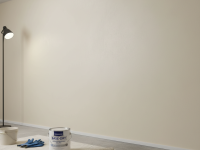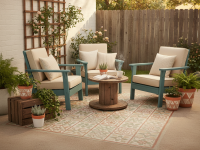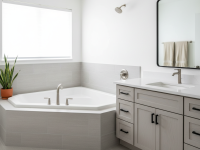Hey there, fellow plant and pet parent! You know that feeling, right? You adore your furry companions, those bundles of joy and mischief, and you also dream of a lush, vibrant indoor jungle. But then reality hits: Fido eyes your beautiful Monstera like a new chew toy, and Mittens sees your delicate fern as her next personal batting practice. It’s a tale as old as time for many of us, and honestly, the struggle is real!
For years, I wrestled with this very dilemma. How could I bring more greenery into my home without constantly worrying about my pets’ safety or sacrificing my plants to their playful curiosity? It felt like an impossible balancing act. But after a lot of research, trial and error (oh, the errors!), and learning directly from my own pets’ antics, I’ve discovered that creating a beautiful, safe, and thriving pet-friendly indoor garden is absolutely within reach. And guess what? It’s not as hard as you might think!
My goal with this article is to share everything I’ve learned, all the practical tips, and even a few personal anecdotes to help you create your own indoor oasis where both your plants and pets can happily coexist. We’re talking about a space where you can relax, breathe deeply, and enjoy the beauty of nature without constant supervision or emergency vet calls. So, let’s dig in!
Understanding Your Furry Friends’ Natural Instincts
Before we even think about which plants to buy, let’s take a moment to understand our pets. They’re not trying to be destructive; they’re just being… well, pets! Each species, and even individual animals, have their own unique quirks:
- Cats: The Curious Climbers & Nibblers. My cat, Luna, is a master of exploration. If she can reach it, she’ll sniff it, maybe bat at it, and quite possibly take a tiny taste. This means anything within jumping or climbing distance is fair game. Her instincts also tell her to chew on things, which often extends to plant leaves, sometimes just for play, other times for a bit of fiber.
- Dogs: The Diggers, Chewers & Knock-Over Artists. My dog, Buster, is a whole different ballgame. His primary plant-related mischief comes from digging in pots (oh, the soil trails!), chewing on stems, and occasionally, with his wagging tail, sending a perfectly placed pot flying. Younger dogs, especially, explore with their mouths, so anything at ground level is an immediate temptation.
Understanding these behaviors is key to prevention. It’s not just about avoiding toxic plants; it’s about creating an environment that respects their natural tendencies while gently guiding them away from plant-related hazards.
The Golden Rule: Pet-Safe Plants Only!
This is probably the most crucial step. I caot stress this enough: always, always, ALWAYS check if a plant is safe for your specific pets BEFORE bringing it home. Trust me, a quick Google search or a check on the ASPCA website can save you a world of heartache and a hefty vet bill. Here are some of my personal favorites that have proven to be fantastic, non-toxic choices:
My Go-To Pet-Safe Plants:
- Spider Plant (Chlorophytum comosum): These are like the superstars of pet-friendly plants! Easy to care for, they look great in hanging baskets (which helps keep them out of reach, too!). My cats absolutely love batting at the “spiderettes” but thankfully, they’re harmless.
- Boston Fern (Nephrolepis exaltata): Lush and beautiful, these ferns add incredible texture. They do need a bit of humidity, but they’re completely safe for curious nibblers.
- Areca Palm (Dypsis lutescens): Want that tropical vibe? An Areca Palm is a fantastic, non-toxic choice that can grow quite large and provide a real statement piece.
- Herbs (Basil, Rosemary, Thyme, Parsley, Mint): Not only are these safe, but they also smell amazing and can be used in your cooking! Just remember, some cats and dogs might still get an upset stomach if they over-ingest anything, even safe plants.
- African Violet (Saintpaulia spp.): For a splash of color, these little beauties are perfect and completely safe.
- Christmas Cactus (Schlumbergera spp.): Another lovely flowering plant that’s non-toxic and relatively easy to care for.
- Prayer Plant (Maranta leuconeura) & Calathea (Calathea spp.): These beauties offer stuing foliage and are generally considered non-toxic to pets. They’re a bit more demanding with humidity, but worth it for their striking patterns.
Plants to Absolutely AVOID (Commonly Toxic):
This list is far from exhaustive, but these are some of the most common toxic houseplants you might encounter:
- Lilies (especially dangerous for cats)
- Sago Palm
- Pothos (Devil’s Ivy)
- Dieffenbachia (Dumb Cane)
- Philodendron
- Aloe Vera (the gel is safe, but the plant itself can be toxic if ingested)
- Snake Plant (Sansevieria)
- Azalea & Rhododendron
- Tulips & Daffodils (especially the bulbs)
When in doubt, always err on the side of caution. My go-to resource is the ASPCA’s toxic and non-toxic plants list. Keep it bookmarked!
Strategic Placement: Where to Put Your Greenery
Once you have your safe plants, placement is the next big hurdle. This is where you really need to think like your pet!
- Go Up, Up, Up! For cats, anything on high shelves, hanging baskets, or sturdy wall-mounted planters works wonders. I’ve found that placing plants on shelves that are simply too narrow for them to comfortably perch on also helps deter unwanted attention. Just make sure those shelves are securely mounted – you don’t want a plant (or a cat!) falling.
- Heavy & Stable for Dogs: If you have a tail-wagger or a floor-level explorer, opt for heavy, sturdy ceramic or terracotta pots that are difficult to knock over. Place them in corners or against walls rather than in the middle of a high-traffic area.
- Designated “Pet Zones”: This has been a game-changer for me. I have a small corner dedicated to pet-friendly plants that are actually for them. Think a pot of cat grass (oats, wheat, or barley grass) for cats, or a pot of mint for a dog to sniff. This provides an acceptable outlet for their natural curiosities.
- Consider Plant Stands: A tall, sturdy plant stand can elevate a plant just enough to keep it out of casual reach for a dog, or make it slightly less appealing for a cat to jump to than a lower surface.
Choosing the Right Containers & Potting Mix
It’s not just about the plant; it’s also about what it’s in!
- Pot Material:
- Ceramic/Terracotta: Great for stability, especially for larger plants that might get bumped by dogs. They’re heavy!
- Plastic: Lighter, more flexible, but easier for a determined pet to knock over or even chew through if they’re particularly persistent. Best for hanging plants or those in very secure locations.
- Avoid Breakables: Glass or thin ceramic pots might look lovely, but one swat from a cat or a tail wag from a dog and you’ve got a mess, and potentially dangerous shards.
- Potting Mix: This is often overlooked! Many standard potting mixes contain perlite or vermiculite, which aren’t necessarily toxic but can cause gastrointestinal upset if ingested in large quantities. I prefer organic potting mixes that are simpler, or even blends with more coconut coir, which is less appealing for pets to dig into.
- Deterring Diggers:
- River Rocks/Pebbles: A layer of smooth river rocks on top of the soil can deter digging. Just ensure they’re large enough not to be a choking hazard for your specific pet.
- Pinecones: Similar to rocks, a layer of pinecones can make the soil less inviting.
- Mesh/Screen: For very persistent diggers, you can cut a piece of mesh or screen to fit the top of the pot, allowing water through but blocking access to the soil.
Deterrents and Distractions: Guiding Behavior
Sometimes, even with the safest plants and best placement, a curious pet might still show interest. This is where gentle deterrence and positive reinforcement come in.
- Taste Deterrents: For chewers, a bitter apple spray (available at pet stores) can be a miracle worker. Most pets find the taste highly unpleasant, and a quick spray on leaves can teach them to leave plants alone. Always test on a small, inconspicuous part of the plant first to ensure it doesn’t cause damage.
- Texture Deterrents: Placing aluminum foil or double-sided tape around the base of a pot can discourage cats from jumping in or dogs from digging. They generally dislike the feel or stickiness.
- Offer Alternatives: The best deterrents are often distractions! Provide plenty of appropriate chew toys for dogs, and scratching posts, cat trees, and dedicated cat grass plants for cats. If they have acceptable outlets for their natural behaviors, they’re less likely to seek out your houseplants.
- Positive Reinforcement: When you see your pet interacting with their own toys or safe plants, praise them! Reward them with treats. This reinforces the idea that there are “good” things to play with.
- Training: Simple commands like “leave it” or “off” can be incredibly helpful for dogs, but require consistent training.
Maintenance for a Pet-Friendly Garden
A safe garden isn’t just about the plants you pick; it’s about how you care for them.
- Pest Control: This is huge. Chemical pesticides are a big NO-NO in a pet-friendly home. If you have a pest issue, opt for natural solutions like neem oil (make sure it’s pet-safe, as concentrated neem can be an irritant), insecticidal soap, or even just wiping leaves with a damp cloth. Always read labels carefully and, if in doubt, isolate the affected plant until the issue is resolved naturally.
- Watering: Don’t leave standing water in saucers, especially if your pets are prone to drinking from odd places. Some plants can leach chemicals into the water, and stagnant water can breed bacteria.
- Pruning: Promptly remove any dead or dying leaves. These can be more tempting for pets to chew on, and it’s always best to get rid of them to keep your plants healthy.
My Personal Journey and Tips
Creating my pet-friendly indoor garden has truly been a journey of discovery. I remember one scare I had with what I thought was a safe plant, only to find out it could cause irritation if ingested. That’s when I became hyper-vigilant about checking every single plant. It taught me patience and the importance of continuous learning.
My biggest takeaway? Start small. Don’t try to transform your entire home overnight. Pick one or two pet-safe plants you love, place them thoughtfully, and observe your pets’ reactions. Slowly expand your collection as you gain confidence and learn what works best in your unique home environment. It’s an evolving process, and your pets will teach you a lot along the way!
Another tip: Don’t feel guilty about prioritizing your pets’ safety. If there’s a plant you absolutely adore but it’s toxic, consider if you have a truly inaccessible spot for it (like a closed-off room or a high shelf that’s genuinely out of reach). But generally, finding beautiful pet-safe alternatives is the most stress-free route.
Conclusion: Happy Plants, Happy Pets, Happy You!
So, there you have it! Creating a pet-friendly indoor garden is absolutely achievable. It takes a little plaing, a lot of awareness, and a dash of creativity, but the rewards are immeasurable. Imagine a home filled with vibrant greenery, fresh air, and the joyful presence of your beloved pets, all coexisting in perfect harmony.
You can have that serene, green oasis without sacrificing your pets’ well-being. By choosing safe plants, strategic placement, smart containers, and gentle guidance, you’re not just creating a garden; you’re cultivating a happier, healthier home for everyone, paws and all. So, go ahead, embrace your ier gardener, and start building that pawsitively perfect indoor paradise!



